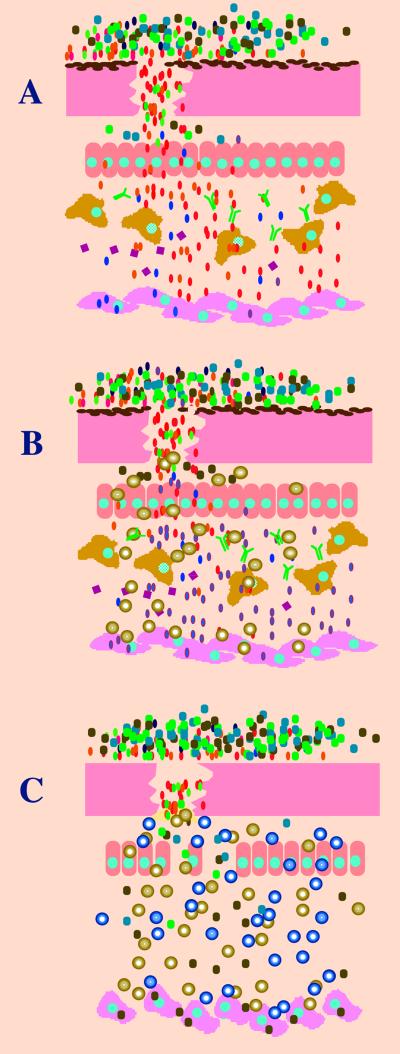FIG. 1.
Infection and antibiotic treatment are both stringent growing conditions. Several bacteria are able to grow at the temperature and oxygen tension of and using the nutrients present in the human body. However, only some are able to produce infection; this is shownin panel A. Several bacterial species (ovals are pathogens, circles are environmental ones) coexist outside the host. Some species are able to displace the commensal flora, traverse through different epithelia, resist the action of macrophages, antibodies, defensins (with squares), and all the anti-infectious mechanisms of the human body, to finally reach the target cells where the disease is produced. At any of these sequential bottlenecks, only some bacteria are selected, and their population is further amplified, so that, from the high variability of bacteria that could potentially produce the disease, only some are really pathogenic. In panel B, the same situation is analyzed but under antibiotic treatment (spheres). In this case, only a small proportion of the cells belonging to the infectious species (the antibiotic-resistant ones; blue ovals with a red line) are able to produce infection, so that the antibiotic-treated host is a more stringent ecosystem for the growth of bacteria. However, in the case of a debilitated person (panel C), the situation is somewhat different. In these patients, the indigenous microflora might be removed because of antibiotic use, the epithelial integrity may be impaired (intubated patients), the immune system can be abolished (immunocompromised patients), and even the target cells can change. Under these circumstances, some environmental species can produce infection (opportunistic pathogens), because growth conditions are less stringent. However, at least in the developed world, those patients are usually under heavy antibiotic treatment, frequently with a combination of antibiotics (golden and blue spheres), so that only those species with an intrinsically antibiotic-resistant phenotype can produce the infection. Under these circumstances, the main selective force is antibiotics, so that antibiotic treatment becomes a risk factor for some pathogens.

